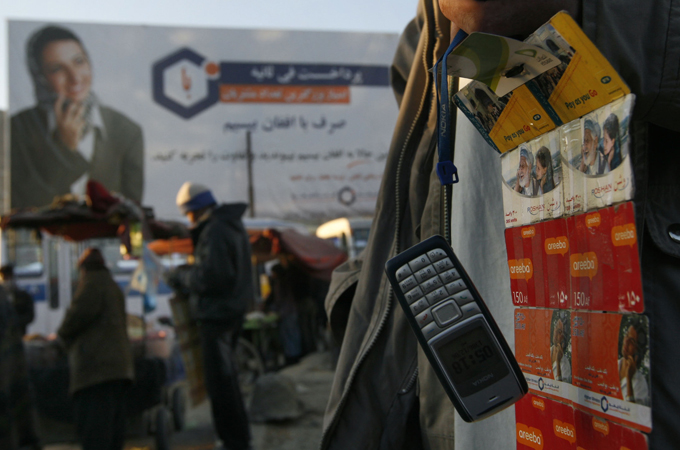Afghanistan’s economy at a glance
Despite steady growth over the past decade, landlocked nation’s high dependency on foreign aid remains a concern.

 |
| Rapid growth of the Afghan telecom industry is considered one of the success stories of post-Taliban economy [AP] |
After decades of conflict, Afghanistan’s landlocked economy is recovering steadily. Improvement in agricultural production and a spike in construction, transportation, and security spending through international aid have been the main drivers of the growth.
| Afghan economy | ||||||||||||||
|
Since 2003, the country has seen an average GDP growth of 9.1 per cent. In 2010/2011, the GDP grew by 8.4 per cent. The country has also experienced an average 34 per cent revenue increase over the past three years.
But concerns remain as to how Afghanistan, heavily dependent on foreign aid and businesses created due to foreign military presence, can manage as foreign troops begin their withdrawal. About 90 per cent of the country’s roughly $17bn budget comes from foreign donations. Footing the bill of its 300,000-plus national security force will be a major challenge.
Keep reading
list of 4 itemsBoeing hit with 32 whistleblower claims, as dead worker’s case reviewed
US imposes new sanctions on Iran after attack on Israel
A flash flood and a quiet sale highlight India’s Sikkim’s hydro problems
Corruption remains endemic. Opium production, estimated at “farm gate value” of $1.4bn in 2011, continues to cast a dark shadow on the country’s economy. And over the past five years, the country’s exports (at about $2.8bn) have remained disproportional to the size of imports ( $9.2bn). Fluctuating weather has also left the harvests unpredictable in the country where 36 per cent of the population is considered poor. In 2011, wheat harvest was 25 per cent bellow that of the previous year and over 10 per cent below the decade’s average.
Fiscal sustainability is considered a major challenge as the country’s operating expenditure grows faster than revenues. In the coming year, operational costs are expected to rise to about 20 per cent of the GDP and revenue collection will stand at merely 12 per cent. The World Bank, in a report, said Afghanistan could face a $7 billion deficit in its budget annually through 2021, even if the country begins collecting income from its mineral wealth.
For Afghanistan’s long term economic sustainability, developing the mineral sector – with untapped deposits estimated at nearly $1 trillion – is a possible way out. The deposits include iron, copper, cobalt, gold and critical metals such as lithium.
Though doubts remain as to whether Afghanistan has the capacity to tender and develop the mines. Some investors have shown high interest already. China Metallurgical Group (MGC) has already acquired the extraction rights to mine copper at Mes Aynak in Logar for $3bn. The mine could give Afghanistan nearly $400m a year in direct payments and also create thousands of jobs.
